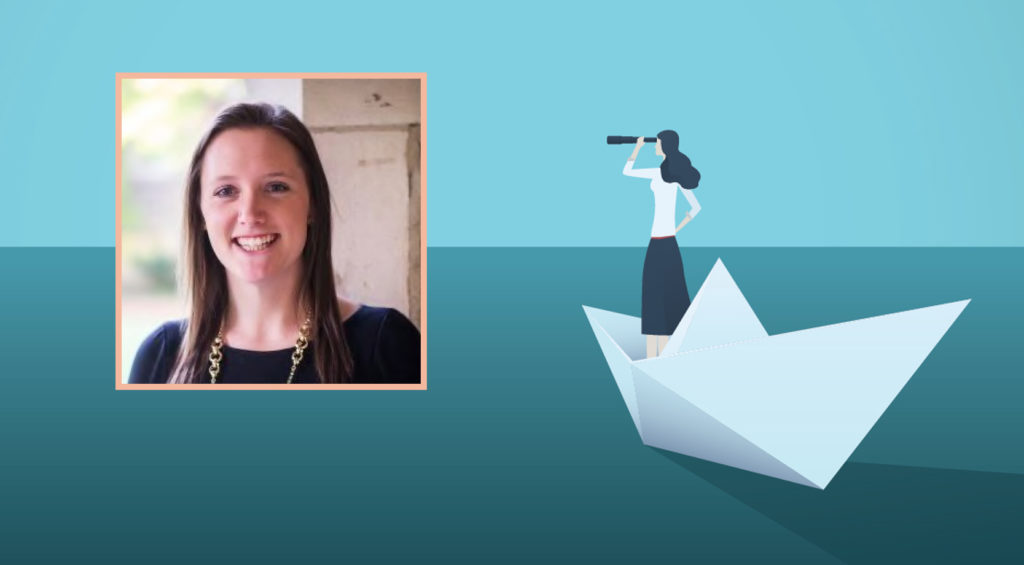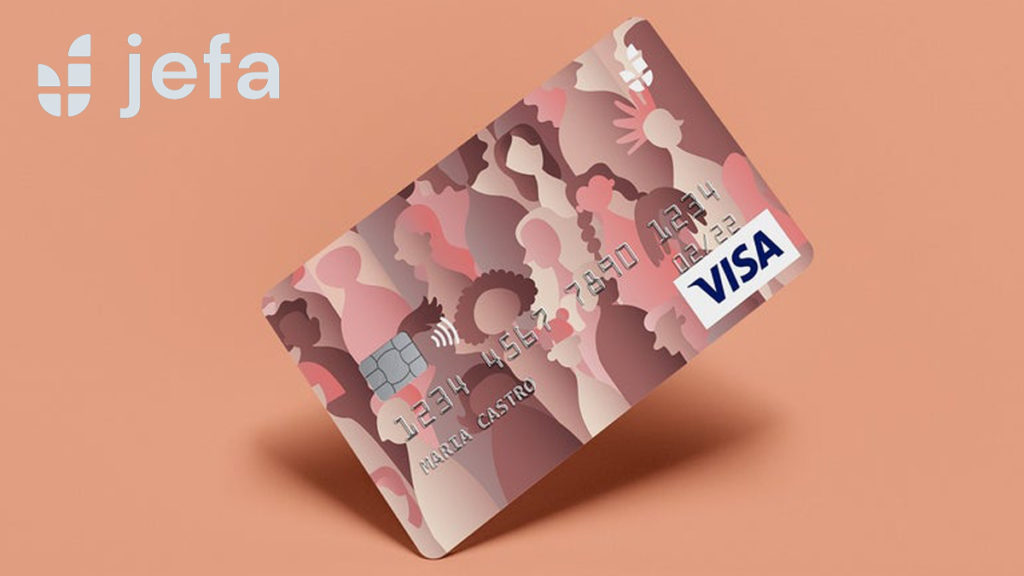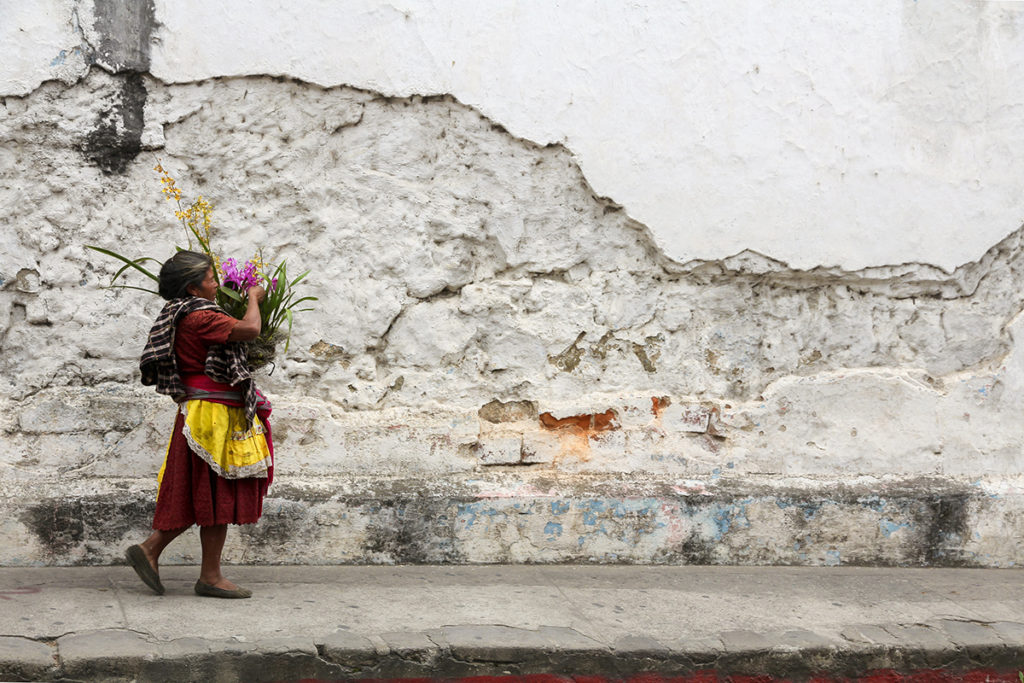
“The Devil Wears Technology” Blog – Changing Banking for WOMEN in Latin America
Interview with Emma Sanchez-Andrade Smith, Founder & CEO, Jefa – the Digital Bank for Women

Hello wonderful banking and tech world.
I am elated to bring you another fantastic interview with another fantastic game-changing visionary. I invite you to meet, Emma Sánchez Andrade Smith, CEO & Founder of the neobank designed for the unbanked women in Latin America called, Jefa (which means BOSS in Spanish).
Let’s start with her dynamic background.
She is originally from Orcas Island, Washington but spent a lot of time living abroad in Costa Rica and Mexico growing up. Emma attended Duke University where she studied International Comparative Studies, Arabic Literature and Innovation and Entrepreneurship, and completed her Masters of Science at the London School of Economics in International Development. (VERY IMPRESSIVE)
She is a former fintech founder recognized by Nasdaq and the Forbes 30U30 with experience at Bridgewater and United Nations, speaks 5 languages and considers herself a Digital Nomad.

Now let’s talk a bit about Jefa. This Fintech banking startup is aiming to be publicly launched by December. Starting in Mexico, Jefa will eventually expand to other countries in Latin America and the Caribbean. This famous stat is one of the reasons that led Emma to start Jefa, “There are 1.4 billion people in the world without a bank account. Out of those 1.4 billion, nearly 1.3 billion are women.”
BTW, men can also become clients of Jefa. 🙂
For a bit more info on Jefa and stats around underbanked women, please read this recent article Growing Force: Rise of women in fintech brings big benefits.
Enjoy, Embrace and Empower!
I read that you worked in Microfinance in the beginning of your career. Can you tell us a bit about your experience?
At the beginning of my career, I started a microfinance organization in West Africa. We were the first to lend to young adults, in an attempt to help young people create economic livelihoods for themselves and their communities. This is what sparked my interest in building finance solutions for the underserved. I realized how few people in the world, particularly in emerging markets, had access to formal financial services. And those that did had access to loans here, savings there, but no comprehensive one-stop-shop the way I do with my bank. I saw a massive opportunity in that. Especially given that emerging markets, where most of the financially underserved people live, are the markets that will see superior and diversified economic growth. It was long-past time that we started to see the potential in these markets.
I saw these incredible stats on your LinkedIn page: “50 years ago, a woman couldn’t even open a bank account. And today, we are stuck with antiquated, legacy banking infrastructure – built by men, for men. So it is no surprise that 75% of women are dissatisfied with their bank. And that 1.3 billion women remain without any bank account at all.”
In your opinion, why are so many women not satisfied with their banks? And why are so many women “unbanked”?
In LATAM, there are five particular reasons that banks don’t work for women:
- The fact that banks have a deposit minimum require that women often struggle to meet, especially given they statistically earn less than men.
2. Banks require customers to physically open and manage an account, which is hard for women who have a limited ability to travel away from caregiving duties.
3. Banks offer overly confusing products and women have lower levels of financial literacy.
4. Since women have more up-front costs to reach and the margins are smaller, banks invest in marketing channels designed by men, for men.
5. In many countries, banks require a ‘proof of occupation’ to open certain accounts, and a stay-at-home mom or housewife is not considered an occupation.
What led you to start the digital bank called, Jefa, (in Spanish, “Girl Boss”)? Tell us more about the bank and Jefa’s mission.
I’ve been working in finance in emerging markets for the last seven years, across five continents. My core focus was on delivering financial services to underserved populations, as my belief is that economic empowerment is critical to better livelihoods. During this journey, I learned a lot about the financially excluded – where they lived and worked, what they bought, why they were left out. But it took me a while to learn the most important insight – that the huge majority of the world’s financially excluded are women.
This problem got even more interesting when I started talking to women who do have a bank account – and learned it wasn’t meeting their needs. I found out that 75% of women around the world are dissatisfied with their bank account. This also made sense to me – banks were, after all, never built with women’s needs in mind.
Taking all of this in, I remember thinking: it is time to dismantle these antiquated legacy assumptions of what a bank should look like. We need to strip down everything we know about banking – because it was all built by men and for men – and rebuild from the ground up. We need to collect data about women’s financial lives. And we need to use these insights to build a product that finally meets their needs.
When I was growing up, my grandma used to say: “a woman who controls her finances controls her life”. And this is the heartbeat of our mission. We are here to empower women to reach their full potential. That means giving them the financial tools they need to do so.
I hear there is a looong waiting list to become a client / start an account with Jefa? I am so curious to hearing why?
It’s about building a product, data, and growth channels that finally serve women: the customers are showing just how exciting this is by expressing their interest early!
When I was growing up, my grandma used to say: “a woman who controls her finances controls her life”. And this is the heartbeat of our mission. We are here to empower women to reach their full potential. That means giving them the financial tools they need to do so.
I really love the design of the credit cards and the website. It feels like it embraces femininity without being hyper-feminine. How did you come up with the branding?
The visionary behind our branding is Chris Hagan, who has been very user-centered in thinking about what our customers want to see and how! We have done extensive research to know that women have distinct behavior when it comes to how they interact with brands and we’ve tried to base our look soundly on the data.

Are men allowed to become clients of Jefa?
YES!
How will Jefa help women in Latin America with their banking needs ?
We decided on LATAM partly because I lived there growing up and the team knows/hails from the region, but also because of a few unique dynamics when it comes to women: most women in the region don’t have a bank account. But most of them do participate in the labor force. These dynamics were a dream landscape for us to start in – women are earning money and are looking for somewhere to manage it. On top of that, women control 80% of all household spending – and this represents an $8 trillion opportunity in LATAM alone.
Across LATAM, there are over 500 spoken languages. There are over 800 indigenous groups. It is a region rich in language, culture, tradition – and as such, localizing our product is crucial to our success. The interesting pattern we are starting to pick up on is that women have more in common with each other – across demographic factors – than they do with men who share the same economic status, race, religion, ethnicity, or geographic region. They face the same challenges, related to gender expectations, interpersonal violence and abuse, and being underestimated – and share the same opportunities, such as having closer family ties, and greater emotional intelligence.

What other components/aspects are important for a fintech startup besides technology?
- Now, more than ever before, is the time for banks to go digital, to provide an exceptional user experience, and to offer more services to more women.
- Banks will struggle, as they wrestle with digital transformation. Physical branches and legacy software can’t hold up. We will see less use of cash and fewer contact points – more payments will become digitized, like they are with Jefa.
- Experience is everything. During/after crisis periods is when people crave simplicity, awareness, transparency, clear expectations, and frequent status updates the most. That’s why we’re building the app in line with these needs.
You are now a player in the fintech space. What makes a neobank special vs. a traditional bank?
Being a neobank makes it easier to focus on affinity groups. Banks have always been sort of ‘soulless’ entities, in the sense that they are not built to serve the unique needs of any particular group or customer. This is particularly true for women. Banks were never built with women in mind as customers. It was only 50 years ago in the US that a woman could even open a bank account.
The advantage of a neobank is that we can now custom-build a product for women’s needs, in a way that traditional banks haven’t. We can use data, product, and distribution channels to create an offering that is completely distinct for women. This is exciting for us because women make great customers – women default less, they get better returns, they are more loyal, and they share with friends more often than men.
Many neobanks are started by men. Can you comment on any differences between banking needs for women vs. men?
I learned this firsthand at my last company, a neobank for under and unbanked populations in Africa, when I saw that nearly 90% of our customer base were men. I started asking other fintech founders, around the world, if they saw numbers like these too and the answer was a resounding “yes”.
There are 1.5 billion unbanked people in the world. And 1.3 billion of these are women. Around the world, 42% of women do not have access to a bank account – thus lacking the financial services they need to create a stable livelihood for themselves and their families. This absolutely rattled me. But it also made sense – 90% of fintech founders around the world are men. Which means they’re likely building and designing products with an inherent male bias, so naturally men would be the main adopters.
The opportunity for financial inclusion in startups is immense. I cannot emphasize enough how much we need more innovation in this space. Not only for women, but for everyone who is underserved.
How important are financial inclusion startups for the underbanked? Any advice for anyone who wants to break into this sector.
Legacy financial institutions were built in such a way that they work for the wealthy. They don’t work well, if at all, for those at the bottom of the pyramid. And the crazy thing is this ‘bottom of the pyramid’ represents the majority of people in the world. Which means most humans on earth aren’t getting their needs met when it comes to finance.
The opportunity for financial inclusion in startups is immense. I cannot emphasize enough how much we need more innovation in this space. Not only for women, but for everyone who is underserved. Indigenous people. Children. Lower-income. Immigrants. People of color. Our work is cut out for us. So, my advice would be, get to work. The world needs your vision.